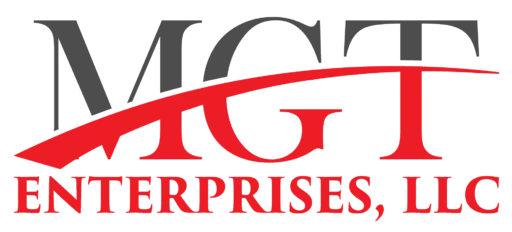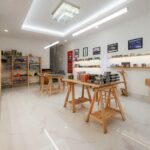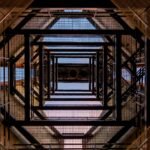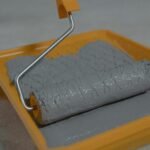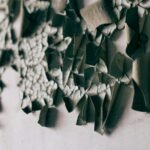Have you seen how a dent or crack, no matter how small, becomes magnified in bright office lights? That’s where skim coating drywall restoration comes in, transforming your bad walls into smooth, flawless, painterly finishes.
In commercial wall restoration and repairs, skim coating does not just fill in damage, but it also restores unoccupied spaces into adjoining spaces, hides stubborn stains, and offers the Level 5 finish, the standard in commercial drywall finishes. Drywall repairs, with proper primers, proper skim coat applications, and with safety and dust control in mind, deliver a seamless wall finish, no matter the application.
Assess And Prepare the Substrate
Surface Preparation
Prior to starting any skim coating of drywall repair, it is important to inspect the conditions of the substrate. Measure moisture content, check for adhesion/durability, and de-gloss any glossy paint to provide a surface for adhesion. Block stains with a block primer. Reset fasteners. Reinforce cracks with mesh tape. Skim coating should result in a durable and even finish.
Working Conditions
When restoring a masonry wall, containment and security of surfaces are important to minimize any dust and debris. Make sure to maintain the recommended temperature and humidity ranges for the performance of the products and apply lead-safe work practices for all older facilities when following these documents. Not only will it help to guarantee compliance, but it also helps to keep the workforce safe.
Materials And Tools That Matter
- Compound Types — Drying-type compounds tend to shrink more and can be sanded easily, while setting-type compounds cure faster, shrink less, and provide stronger finished products.
- Lightweight Options — Lightweight and dust control compounds limit airborne particles, which makes skim coating drywall repair with these fewer particles in a bustle around a busy jobsite easier and safer.
- Eco Choices — Low-VOC and Greenguard Gold-certified products offer lower indoor air quality concerns, which are easy and critical for commercial wall restoration in occupied spaces or maintaining IAQ.
- Application Tools — Wide knives, skimming blades, trowels and pans, or hawks allow you to apply compound more smoothly and consistently on a larger area of wall.
- Sanding Equipment — Pole sanders and vacuum sanders with screens allow for better control of the dust and provide a more uniform sanding effect to improve efficiency and safety.
Skim Techniques
Skim Definition
A skim coat is a light, full-surface treatment applied to restore a smooth surface and hide imperfections in a wall. In the case of a skim coat over drywall repair, this is beneficial when you have a crack, a stain, or a wall texture that you want to hide. The goal of a skim coat is not thickness, but to create a smooth and flawless surface. For commercial wall restoration, one can create a professional-grade surface to give modern paint and design a platform to work.
Multi-Pass Workflow
Skim coating follows a defined multi-pass approach of tight coat, fill coat, and finish coat. Each layer serves a purpose of bonding, filling, and refining. Between coats, sufficient drying time will avoid bubbling or cracks.
Feathering the edges will hide the visible transitions completely upon smoothing, to allow for seamless blending. This care and attention will turn flawed walls into smooth canvas backgrounds perfect for paint, wallpaper, or just about any other decorative treatment in commercial or domestic use.
Thickness Control
Consistency in thickness guarantees that ridging, flashing, and surface defects do not show, particularly in critical lighting. A wet-mil gauge will help provide the right amount of product to be applied, as putting on too much will leave you with shrinkage, and too little will expose surface defects.
Let each coat dry completely prior to sanding or recoating to ensure proper and lasting adhesion. This is critical for a durable, commercial wall restoration, as this degree of thickness control will produce a professional finish.
Drying, Sanding, And Dust Control
The drying times for skim coat applications over paint will be impacted by the airflow, temperature, and humidity of the conditions. Conditions that are warm with steady airflow will yield faster curing times. Moderate humidity will slow the drying results. When possible, sequencing the use of rooms will guarantee surfaces are dry uniformly, which reduces conflict with the schedule and helps to ensure smoother finishes and dependable repainting prep tips.
Wet sanding minimizes dust, while vacuum sanding confirms the final cleanup is safer in sensitive spaces. Protecting workers by following OSHA silica standards, while containment limits contamination when working in schools or healthcare facilities. Dust control is practiced to guarantee that skim coating over paint is completed effectively and safely.
Level 5 Finish, Priming, And Painting
Under critical lighting conditions or with gloss paints, a Level 5 finish is necessary. You can either skim-coat completely over the paint, or use a primed surface or prime-and-skim surfacer applied via air spray. Uniform porosity produces uniform absorption to minimize flashing and surface defects, and remembering the repainting preparation tips maximizes durability and flawless performance of the paint.
Commercial Wall Restoration Nuances
Successful commercial wall restorations require efficient management of scale, scheduling, and coordination with other trades. Matching existing textures with skim coating on drywall repair will lend to a seamless finish on restoration projects.
Setting compounds for deep fills and closeout documentation with finish-level notes will keep with the facility’s records. Following these practices will lead to lasting results and subsequent project consistency during future restoration work.
QA Checklists And Common Failures
- Examine adhesion to determine appropriate adhesion and to lessen the possibility of delamination.
- Check for coverage holidays, lap lines, and pinholes that disrupt continuity.
- Assess joints for telegraphing and surfaces for sheen variations under final lighting.
- Check the type of primer and make sure the wet film thickness is as specified with accurate gauges.
- Compare results to GA-214 finish levels to ensure specification compliance.
- Confirm mockups meet acceptance criteria to help mitigate possible issues with large-scale applications.
Smooth, Strong, and Code-Smart
When done right, skim coating drywall repair provides smooth, strong surfaces capable of standing up to demanding conditions. There are important considerations in commercial wall restoration that include consistency in finish levels, dust control, and ‘ready for inspection’ results.

